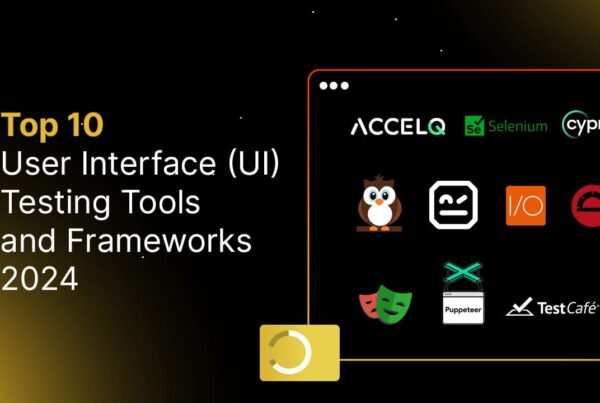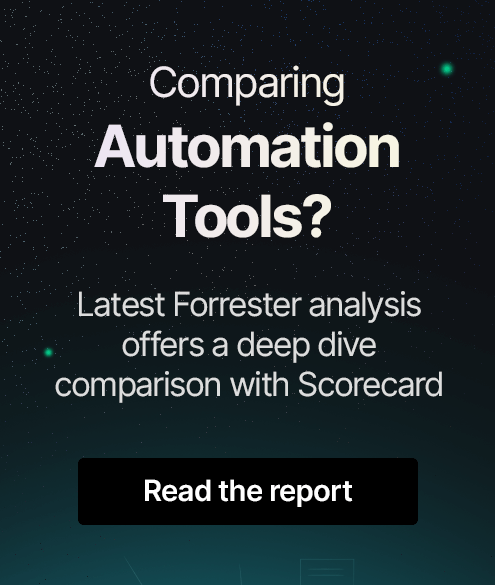Playwright vs Selenium: Which One to Choose in 2025

As web automation evolves, picking the perfect test framework is crucial for reliable and effective test implementation. Playwright vs Selenium is a common debate amongst testers and developers, as both provide robust capabilities for automation testing. Playwright is a modern framework gaining traction with its fast execution feature, whereas Selenium has been the industry standard for decades with its extensive support. In this blog, we will give insight into Selenium vs Playwright across multiple parameters to help you find the right tool for your precise project needs in 2025.
Overview of Playwright vs Selenium
Is playwright open source? Microsoft created the open-source Playwright test framework for comprehensive web testing. It works with C#, JavaScript, Python, and Java and supports popular browsers, including WebKit, Firefox, and Chromium. The playwright’s critical traits encompass headless mode, tracing support, automatic waiting mechanisms, and streamlining of the test method.
On the flip side, Selenium is a free tool (open-source) that has a strong track record in web tests. Selenium also supports diverse platforms and browsers using WebDriver and supports languages like Ruby, Java, JavaScript, Python, etc., making it truly versatile.
Key Features of Playwright and Selenium
Selenium and Playwright are prominent web automation testing tools with traits well-suited for multiple testing needs.
Key Features of Selenium:
- Multi-Language and Multi-Browser Support
- Enhanced Selenium IDE
- Upgraded Selenium Grid
- Relative Locators
Key Features of Playwright:
- Automatic Waiting
- Robust Debugging Tools
- Cross-Platform & Cross-Browser Support
- Parallel Test Execution
The Playwright community is still growing but lacks the extensive resources, integrations, and plugins like Selenium. It lacks support for Internet Explorer and has a newer API that might pose a learning curve. Besides, its ecosystem, third-party tool support, and enterprise integrations are still evolving.
Difference between Playwright and Selenium: A Head-to-Head Comparison
Playwright and Selenium are popular choices among QA engineers and developers. Each offers unique features and capabilities; the right choice depends on your particular project needs. Do you prioritize broad language support and browsers? Is test implementation speed your top concern? Or is a long-standing track record of development significant?
Both Playwright and Selenium are cross-language, open-source, and user-friendly. They fit easily with CI/CD tools like Azure and Jenkins Pipelines while offering modern traits like screenshots and automated visual tests.
| Criteria | Playwright | Selenium |
|---|---|---|
| Browser Support | It supports modern rendering engines like Firefox, Chrome, and WebKit. | Renowned for its broader browser support, it accommodates browsers like MS Edge, Firefox, Safari, Chrome, Opera, & IE. |
| Language Support | It is compatible with JavaScript, C#,.NET, Java, Python, and TypeScript. | It is compatible with various programming languages, counting Perl, PHP, C#, Java, Ruby, Python, and JavaScript. |
| Speed and Performance | The playwright offers rapid execution times and effective handling of strong content. Its auto-waiting minimizes manual waits, boosting test speed & reliability. | Performance depends on WebDriver and browser settings. Selenium, though reliable, may exhibit slower behavior with strong elements. |
| Ease of Use and Setup | Provides easy setup with built-in browser support, reducing configuration. Its advanced API streamlines UI interactions, improving accessibility for beginners. | Configuring Selenium necessitates extra setups like installing browser-centric drivers and adding intricacy to the setup process. |
| Community and Ecosystem | Playwright community is growing but isn’t as enormous as Selenium’s. Yet, active development drives its increasing adoption. | Selenium’s longstanding reputation ensures a vast community, rich resources, and broad plugin backups for continuous development. |
| Debugging Capabilities | It offers Playwright Inspector for stepwise debugging. It allows live debugging in VS Code with trace & video recording features. | Debugging relies on browser dev tools and logs. It supports logs and screenshots but lacks built-in tracing and video features. |
Key Considerations for Choosing Between Playwright and Selenium
- Project Needs: Assess your requirements, considering preferred languages, browser support, and web app complexity.
- Team expertise: Consider your team’s expertise with the tools and programming languages.
- Community and Support: Assess the available resources, community size, and support ecosystem for each tool.
Across all verticals, the purpose of impact analysis for testers is to focus on vulnerable areas, streamline regression tests, and boost software quality, reducing major failures that could have legal, financial, or brand damage.
ACCELQ: Revolutionizing Automation Tests with AI-Centric, Codeless Solutions
ACCELQ emerges as a strong alternative to popular tools like Selenium and Playwright.
- Cloud-Centric Architecture: Team up effortlessly with ACCELQ’s scalable, cloud-powered architecture & automation solution.
- Codeless Automated Tests: This codeless, AI-centric test platform allows QA engineers to generate, perform, and manage tests without deep code expertise.
- AI-Driven Self-Healing: It intelligently adjusts to UI changes, minimizing maintenance and guaranteeing test reliability.
- Rapid test automation Development with lowest maintenance: It controls flakiness, guarantees consistent execution, and expedites software delivery cycles.
- In-sprint automation to align with Agile & DevOps: It assists in-sprint automation, enabling QA teams to automate testing within the same sprint cycle. This guarantees alignment with Agile & DevOps workflows, expediting releases without compromising quality.
- Allow manual QA testers to automate tests with zero programming: It empowers manual testers to automate the test process without any programming know-how, thanks to its intuitive zero-code platform.
- Visual app model for business process validation: It also offers a visual app model that eases business process validation by delivering a clear, end-to-end view of systems. This allows high test coverage, rapid automation, and better collaboration among the team.
- Unified Automation: Its unified automation across APIs, mobile, web, and desktop apps boosts efficiency in dynamic development.
- Comprehensive Test Management with Version Control & Governance: It provides built-in version control, test management, and governance capacities, guaranteeing centralized control, better collaboration, & compliance.
- Seamless CI/ CD Integration and traceability: It guarantees seamless CI/CD incorporation, allowing continuous tests within the DevOps pipeline
Wrapping Up!
In a nutshell, the selection between Playwright vs Selenium in 2025 depends on specific project needs. Selenium, with its great language and browser support, remains a robust option for projects necessitating extensive compatibility. Besides, Playwright also offers robust traits and fast implementation, which is perfect for modern web apps. However, for businesses seeking a unified and user-friendly alternative, ACCELQ delivers a powerful solution, combining the best of both tools.
Secure your test strategy with ACCELQ. Try it NOW!
Prashanth Punnam
Sr. Technical Content Writer
With over 8 years of experience transforming complex technical concepts into engaging and accessible content. Skilled in creating high-impact articles, user manuals, whitepapers, and case studies, he builds brand authority and captivates diverse audiences while ensuring technical accuracy and clarity.
You Might Also Like:
 Top 10 UI Testing Tools In 2025
Top 10 UI Testing Tools In 2025
Top 10 UI Testing Tools In 2025
 Top 10 Oracle Cloud Testing Tools 2025
Top 10 Oracle Cloud Testing Tools 2025
Top 10 Oracle Cloud Testing Tools 2025
 Top 8 Cross Browser Testing Tools In 2025
Top 8 Cross Browser Testing Tools In 2025


































